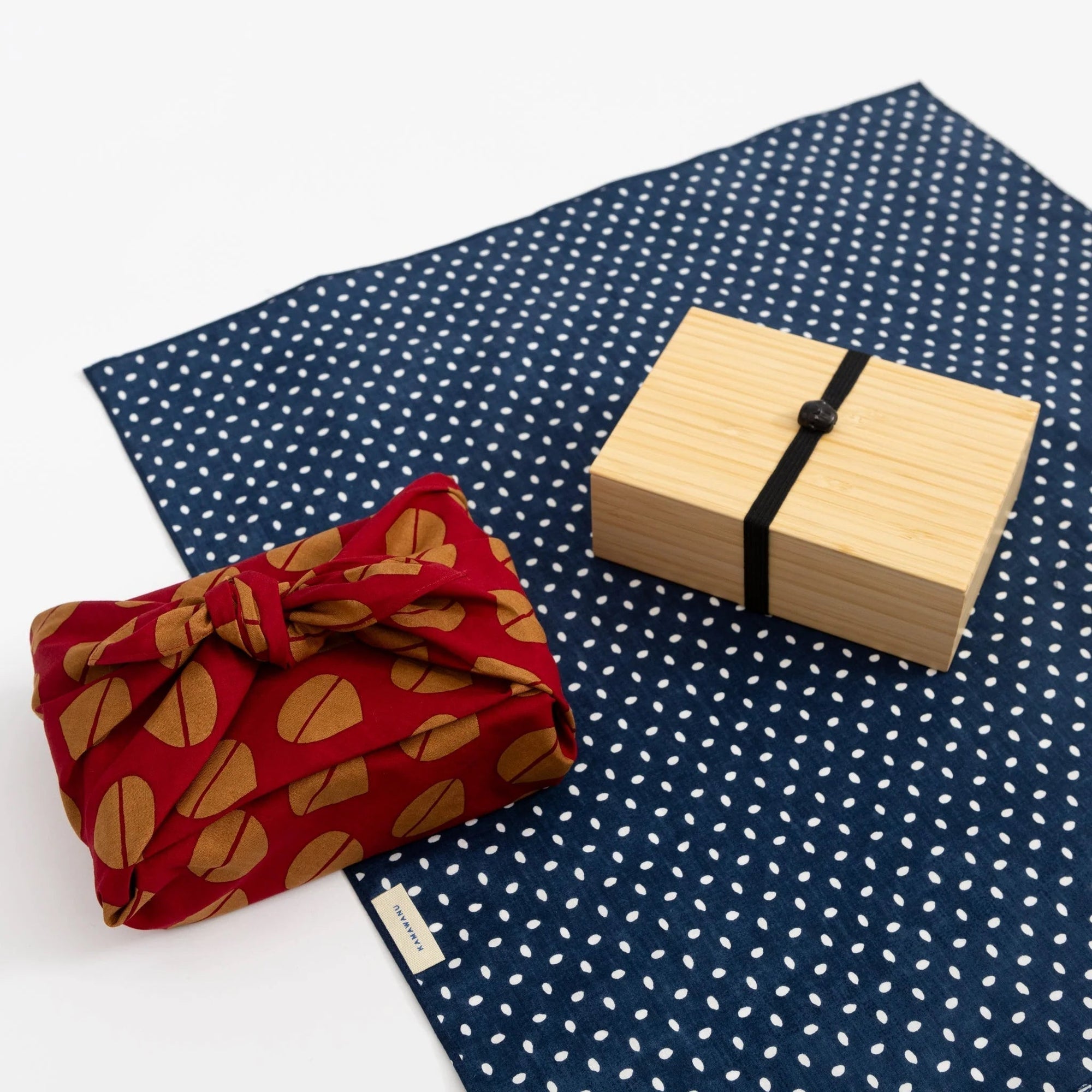
Like many enduring ideas, the furoshiki owes its lasting appeal to an unassuming simplicity—one that has transcended its origins to become both a symbol of eco-consciousness and a staple of contemporary fashion. With origins that stretch back over 1,200 years to the Nara Period, these square clothes were once used by Japanese nobility to wrap precious belongings. However, the furoshiki quickly found broader utility in everyday life, from serving as mats for undressing before baths to a convenient means of transporting goods.
An emblem of Japanese refinement, the furoshiki is best known as a symbol of Japan’s culture of gift-giving—a tradition where even the smallest gestures are wrapped with care to signal respect.

For centuries, the furoshiki remained an integral tool in life, but its popularity waned after World War II as plastic bags rose to prominence. However, as society becomes increasingly attuned to the environmental costs of disposable materials, there has been a quiet renaissance of the furoshiki, an artifact now reimagined as an antidote to our plastic-soaked world.
In 2006, Yuriko Koike, the former Minister of the Environment and current Governor of Tokyo championed the Mottainai Furoshiki campaign—a call to avoid waste by using the versatile wraps. “Mottainai,” she explained, embodies the idea that unnecessary waste is shameful. Her initiative emphasized the furoshiki’s practical advantages: reusable, adaptable, and infinitely more sustainable than single-use plastic bags. Its appeal, she argued, lies in its ability to function not just as a wrapper but as a symbol of a society that values conservation and ingenuity.
In an age when we are finally reckoning with the damage wrought by plastic, the furoshiki serves as a reminder that sometimes the simplest solutions are the most reliable.
Click here to view Japan’s Ministry of the Environment’s visual instructional guide for 14 wrapping methods for various objects ranging from books to watermelons.



